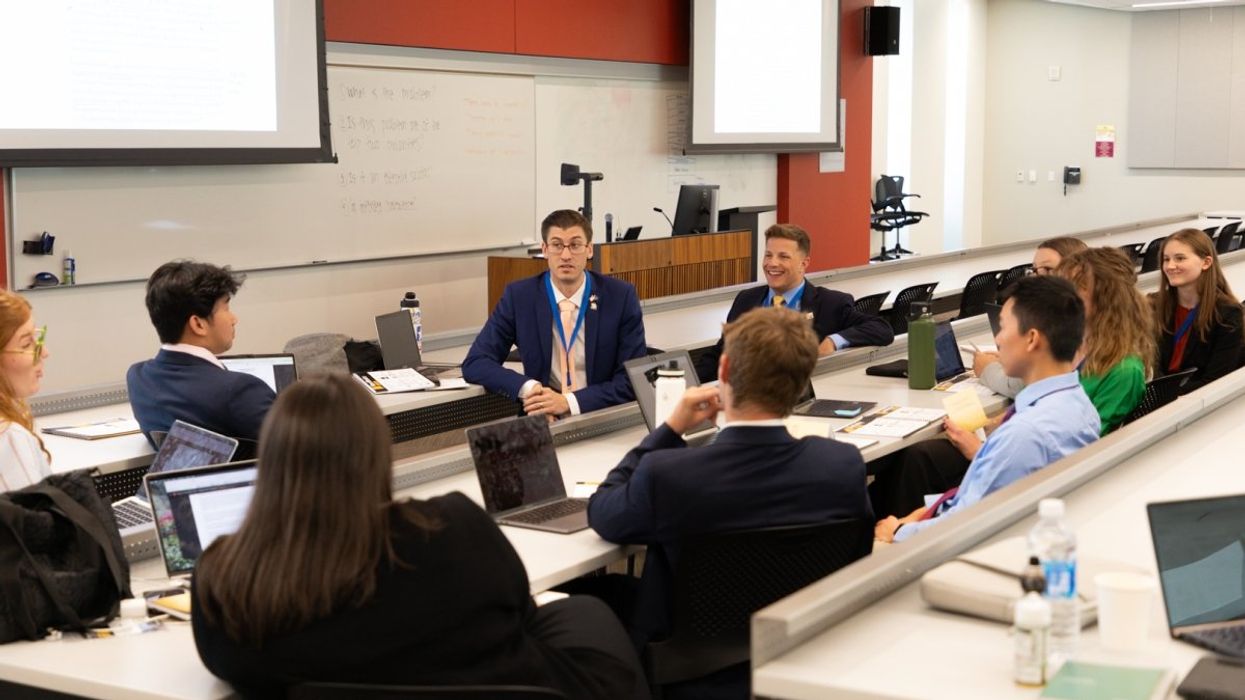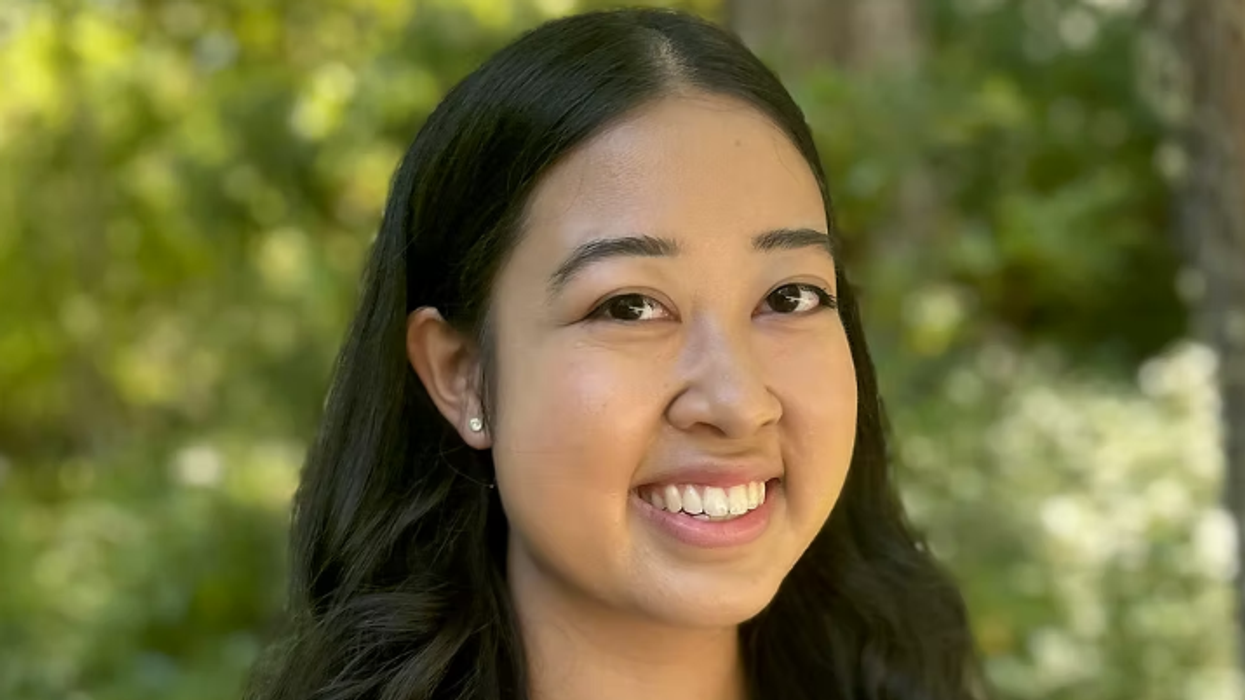LaRue writes at Structure Matters. He is former deputy director of the Eisenhower Institute and of the American Society of International Law.
You may have heard right-leaning advocates call for a "convention of the states" to amend the Constitution to pursue their version of political change, including balanced budgets. Or perhaps you've read their left-leaning opponents say that such a gathering would be a nightmare for democracy. They're both wrong.
Just ask the 106 students who acted as state and territorial delegates in a groundbreaking Model Constitutional Convention at Arizona State University's Sandra Day O’Connor College of Law. They demonstrated how a diverse group from more than 70 universities and law schools across the country could fairly consider big ideas that may — or may not — merit enshrinement in the Constitution.
Before I share the highlights and lessons from this extraordinary event, a quick refresher on an Article V convention is in order.
To date, the only way that an amendment proposal has started its path is via passage by two-thirds supermajorities in both houses of Congress. But there’s another, equally constitutional, route. The founders wanted citizens to be able to pursue amendments if Congress resisted, and so enabled a two-thirds supermajority of state legislatures (34 today) to call for a convention to consider amending the Constitution.*
The emphasis on “consider” is key, as neither Congress nor such a convention can amend the Constitution. Ratification occurs only when a minimum of 75 percent of the states (38) approve amendment proposals, regardless of the method used to introduce them. This explicit constitutional fact is why fears of a convention going rogue or producing partisan or extreme recommendations are overblown. Such outcomes surely would be fraught and divisive, but their proponents and supporters would face almost guaranteed failure; it takes only 13 states to defeat proposed amendments.** Whether the risk of an embarrassing defeat would be enough to keep such proposals from emerging, or if they did emerge and caused national embarrassment, the Constitution nonetheless would hold.
There was no such embarrassment when the students convened over the 2024 Memorial Day weekend in Phoenix. With very few exceptions, the 100 voting delegates (two per state) and six non-voting alternates (representing U.S. territories) fulfilled their roles admirably; in the end, the “model” in the event’s title described their example for the nation.
The students faced serious time constraints. Organized into committees of 10, they communicated remotely to review the rules and consider amendment ideas before gathering. When the convention began, their committees had only a half-day to evaluate proposals and choose two to advance to the plenary sessions. The delegates then had one day to debate the 19 proposals that emerged and just a few hours to hear final arguments and vote. What could go wrong?
Surprisingly little went wrong. The committees used differing levels of formality, but all produced two amendment proposals. The range of outcomes was wide, from the aspirational, such as the right to a clean environment, to the technical, such as constraining the presidential pardon power.
Anticipated amendment proposals, such as abandoning the Electoral College, didn’t make the cut. Perhaps this was because most delegates respected the 76-vote threshold required for adoption, which mirrored the three-fourths tally required for state ratification of any amendment. Unsurprisingly, there were motions to suspend the rules to lower the threshold, but the delegates turned them down, presumably in recognition of the need to produce proposals that ultimately could prevail in the real world.
The plenary sessions were kept rolling by a capable, elected student president, the use of Robert’s Rules of Order, and an experienced parliamentarian. When it came time to vote on the 19 proposed amendments, a virtual spinning wheel randomly selected the one brought to the floor. Each proposal was subject to final pro and con arguments before the delegates voted. After the first three proposals failed with 69, 66, and 66 votes, concern emerged that the convention would not pass any amendments. As each succeeding proposal failed, the anxiety heightened.
Halfway through, no amendment proposal had passed. When the 10th proposal reached the 76-vote threshold, the relief was palpable — a raucous standing ovation interrupted completion of the count. Ultimately, four amendments emerged: on gerrymandering, tribal sovereignty, eminent domain, and broader equal rights regardless of gender, gender identification, and gender orientation.
Quibbles over the content of the amendments (whether proposed, declined or not raised), the limited time allotted for debate or the students’ opportunities for preparation miss the point. Tweaks for subsequent conventions were always expected to improve a first-time, ambitious undertaking. That the leaders, delegates and mentors (I was one of 22) wanted and had ideas for future conventions was the highest measure of success.
The organizers and funders at the ASU law school’s Center for Constitutional Design, led by Executive Director Stefanie Lindquist, deserve all the kudos imaginable for coming up with and executing a truly visionary event.
And the students, of course, deserve tremendous thanks and congratulations for showing how democracy, including constitutional change, can work. If students thrown together under challenging, time-constrained conditions can rise to the occasion, maybe we should not count the adults out yet. Or we can wait for and welcome these students when they take over and need to amend the Constitution, which they will.
*The “convention of the states” language is not in the Constitution. It has been adopted, however, by partisan advocates for an Article V convention, likely compromising the term’s unbiased usefulness.
**Those who are concerned about a convention going rogue sometimes cite the precedent of the only constitutional convention ever held, in 1787. As constitutional amendment scholar Richard Albert reminded the participants one evening, the founders used the “grenade” approach to constitutional change when they threw the Articles of Confederation out the window, including the requirement that 100 percent of the states would have to approve any changes to the Articles. But this is a precedent without contemporary relevance. What occurred in 1787 involved a widely recognized need for change, only 10 years of history versus 237 years, months of secrecy, no instant communication or media, and the involvement of the young nation’s recognized leaders. I would contend that today’s citizens and their political leaders would easily and vehemently oppose any explicit violation of the Constitution’s established amendment procedures. Proposed changes to those procedures may be likely, such as to use lesser supermajorities to advance and/or ratify future amendments, but they would still need to be approved under the existing rules before taking effect.

































